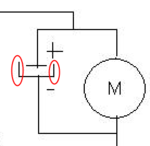bobsun
Full Member level 2
Hello,
I would like to ask a question on motor circuit isolation.
If I use MCU to control H-Bridge, which in turn drives a small stepper motor, would the rapid rise and fall of motor current disrupt MCU’s electric environment?
Some parameters are here:
1. MCU core voltage: 1.2V
2. Motor speed: <60 steps/second
3. Motor current: <1A
4. H-Bridge supply voltage: 5V
This is in fact a very small motor, as well as being both low voltage and low speed. Although I am a newbie with motor circuit, it seems like that the disruption would not be very significant.
Would a capacitor be enough here? If I connect a capacitor to 5V H-bridge supply, another end to ground, then it will get charged when the motor is off, and would discharge to power the motor when H-Bridge is turned on. And since the motor speed, and consequently, H-Bridge on and off frequency is also as slow as 60Hz, could this solution work?
Or, if it would not work, do I need to use optocoupler or digital isolation?
Could any experienced designers here off some suggestions?
Bob
I would like to ask a question on motor circuit isolation.
If I use MCU to control H-Bridge, which in turn drives a small stepper motor, would the rapid rise and fall of motor current disrupt MCU’s electric environment?
Some parameters are here:
1. MCU core voltage: 1.2V
2. Motor speed: <60 steps/second
3. Motor current: <1A
4. H-Bridge supply voltage: 5V
This is in fact a very small motor, as well as being both low voltage and low speed. Although I am a newbie with motor circuit, it seems like that the disruption would not be very significant.
Would a capacitor be enough here? If I connect a capacitor to 5V H-bridge supply, another end to ground, then it will get charged when the motor is off, and would discharge to power the motor when H-Bridge is turned on. And since the motor speed, and consequently, H-Bridge on and off frequency is also as slow as 60Hz, could this solution work?
Or, if it would not work, do I need to use optocoupler or digital isolation?
Could any experienced designers here off some suggestions?
Bob
